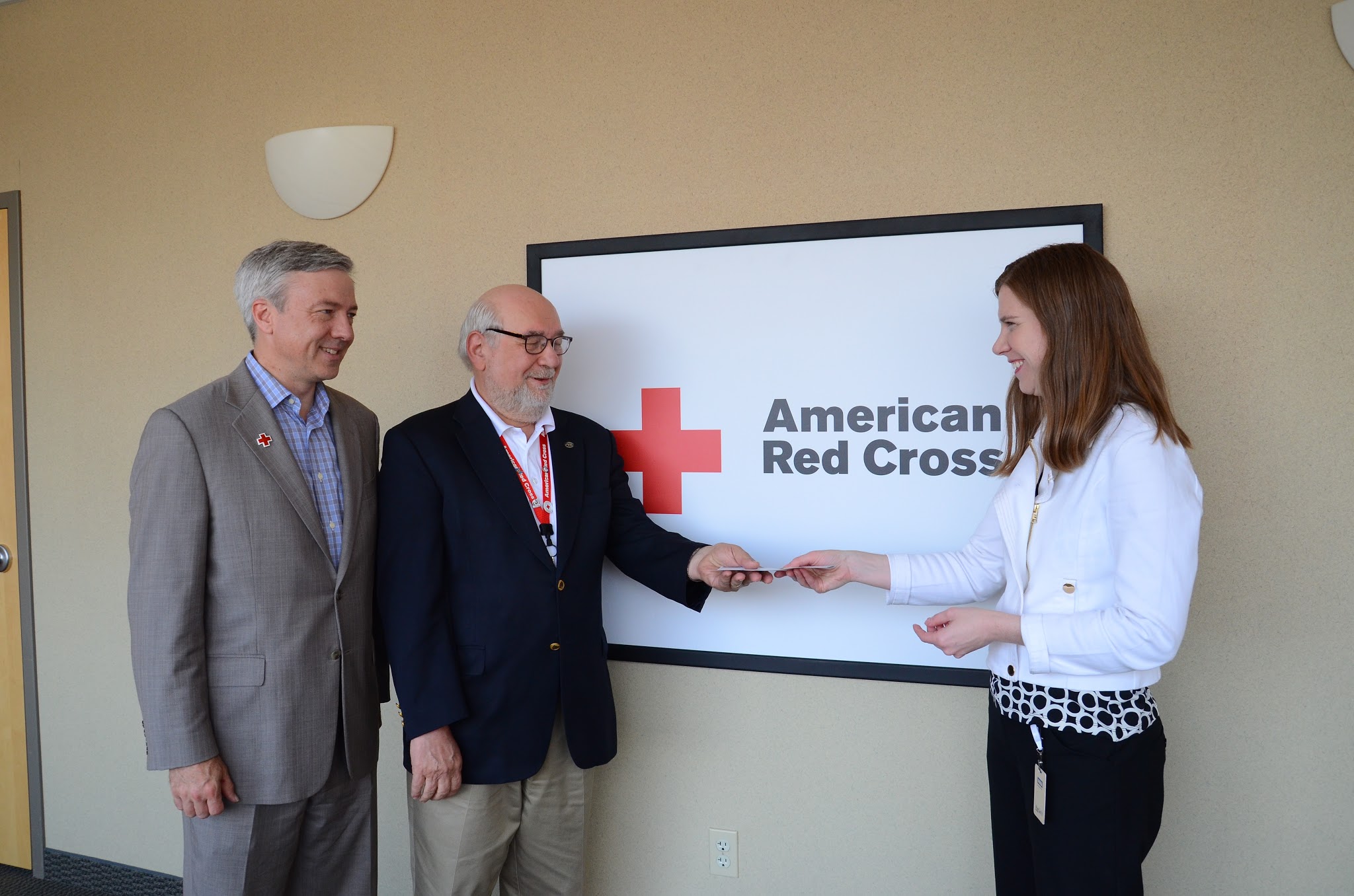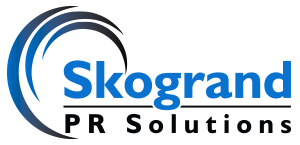
Tracy Carlson, APR, Minnesota PRSA president (r), presents a check to Phil Hanson, executive director, Red Cross Northern Minnesota Region (l) and David Schoeneck, APR (c).
Editor’s note: This post originally ran on Minnesota Public Relations Blog on Sept. 18, 2013.
David Schoeneck, APR, received the Donald G. Padilla Distinguished Practitioner Award at this year’s Minnesota PRSA Classics Awards. He also is the external relations lead for the Twin Cities Chapter of the American Red Cross.
1. What role has PRSA had in your career?
As I mentioned in my acceptance speech at the Classics Awards, I came to public relations the old-fashioned way – via the media. While going to college, I also worked as a reporter and editor at the New Ulm Daily Journal and KNUJ-AM. When I was drafted into the U.S. Army, my prior newspaper experience gave me a civilian acquired skill as an information specialist/combat correspondent (71Q20). I served as a writer and editor for the 4th Infantry Division’s newspaper, “The Ivy Leaf,” in Vietnam.
Several years later, when I made the move to corporate public relations, I had the opportunity to work with a number of senior public relations professionals, including Jerry Wollan of Padilla and Speer and Bob Provost of the Minnesota Insurance Information Center. They both encouraged me to join PRSA and further my professional development in public relations. Another important contact with PRSA was meeting and working with master public relations practitioner Chet Berger, who also encouraged me to gain a deeper understanding of public relations.
That came when, in 1976, I began to study for the PRSA Accreditation examination. I and several other candidates spent a series of Saturdays studying public relations principles and strategies. Impressed by the depth of knowledge conveyed by the presenters, I took the exam and passed. I also became more involved with PRSA, first as a committee co-chair, then later as a board member and officer. I also began to attend PRSA National Conferences, a valuable professional development opportunity.
PRSA has served as an invaluable resource for professional knowledge, networking with senior practitioners.
2. What are some of the key lessons that you have learned in your career?
First, always act ethically. It is always easy to succumb to “group think” and overlook the ethical dimensions of any given action or decision. Second, think strategically. While it is always important to execute effectively on a tactical level, and be able to use up-to-date technology and techniques, it is even more important to make sure that what public relations accomplishes is aligned with management’s goals and the organization’s strategic direction. Third, always strive for quality and excellence. Meet and exceed the needs of your customers, both inside and outside the organization. Fourth, read and study widely. Study a wide variety of media sources, and maintain intellectual curiosity. Gain a broad understanding of arts and culture to stimulate creativity. Finally, become a thoughtful, intense student of your company and your industry. Develop an intimate knowledge of what factors contribute to your company’s profitability, and what trends are driving your industry.
3. How did you get involved in the Twin Cities chapter of American Red Cross? What would you like readers to know about the organization?
In 2002, I decided to focus my volunteerism more narrowly. Because of my longtime friendship with David Therkelsen, APR, Fellow PRSA, who was serving at that time as the president of the Saint Paul Area Red Cross, I became affiliated with the Twin Cities Red Cross Public Affairs on-call team.
This team works as an adjunct to the Red Cross professional communications team. We cover evening and weekend local disasters such as home and apartment fires, and are on-call several nights each month. When a fire or other disaster displaces a family or several families in our Red Cross region, the on-call team is called by other Red Cross volunteers who have helped the affected people, and prepares a news release and does a media call-down. In the case of larger disasters, a member of the on-call team may go to the site and assist with Red Cross media relations. As part of this team, I’ve responded to three Minnesota tornadoes, four floods, and a number of larger apartment fires. In addition, the national Red Cross disaster service team has deployed me twice to larger situations, such as Hurricane Irene and Superstorm Sandy.
The Red Cross has a large staff of communicators who are backed up with volunteers.
4. What advice would you give to new public relations practitioners?
First, join PRSA – it is an invaluable networking and development opportunity, and become active in the organization. Seek Accreditation, when you become eligible. It is a great experience and an important credential to achieve. Attend professional development opportunities by PRSA at the local, district and national levels.
Connect with Schoeneck on LinkedIn.
